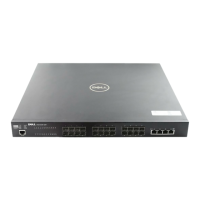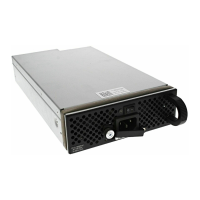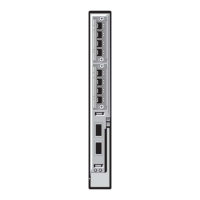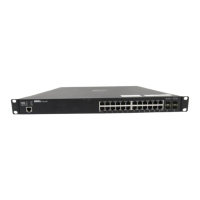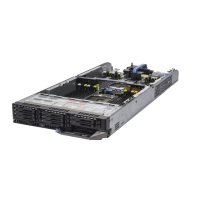30 | Using the Command Line Interface
www.dell.com | support.dell.com
Access to all commands beyond the User Exec mode can be restricted through the enable password,
which you set with the enable passwd command. See enable passwd on page 110.
The following table shows the relationship of the command mode names to the prompts visible in the
mode and the exit method from that mode. The first three rows in the table are organized in the
sequence in which you would access the child modes. Beyond the Global Config mode, the modes are
either accessed from the Global Config mode or from the mode listed in the row above.
The hostname in the Prompt column is a placeholder for the prompt name that you create using the
hostname command. For example, if you use “Speedy”, the User Exec prompt is Speedy>, the
Privileged Exec prompt is Speedy#, and the Global Config prompt is Speedy (Config)#. For
details, see Figure 4-2 on page 29 and Mode-based Command Hierarchy on page 31.
Note: Previous to Release 2.3, the VLAN mode was accessed from the Privileged Exec
mode with the command vlan database. Starting in Release 2.3, you access the mode from
the Global Config mode with the command interface vlan
vlanid.
Note: Some modes may be unavailable, depending on the installed SFTOS image.
Table 4-2. Command Modes
Command Mode Mode Access Method Prompt Exit or Access Previous Mode
User Exec This is the first level of access.
Perform basic tasks and list
system information.
hostname >
Enter
logout.
Privileged Exec In the User Exec mode, enter
the
enable command.
hostname #
To exit to the User Exec mode, enter
exit or
press Ctrl-Z.
Global Config In the Privileged Exec mode,
enter the
configure
command.
hostname (Config)# To exit to the Privileged Exec mode, enter the
exit command, or press Ctrl-Z to switch to
the User Exec mode.
Class Map In the Global Config mode,
enter the
class-map
command
hostname (Config-classmap)# To exit to the Global Config mode, enter the
exit command. To return to the User Exec
mode, enter Ctrl-Z.
DHCP Pool Config In the Global Config mode,
enter the
ip dhcp pool
pool-name command.
hostname (Config-dhcp-pool)# To exit to the Global Config mode, enter the
exit command. To return to the User Exec
mode, enter Ctrl-Z
Interface Config In the Global Config mode,
enter the
interface unit/slot/
port<slot/port> command.
hostname (Interface "if number")# To exit to the Global Config mode, enter the
exit command. To return to the User Exec
mode, enter Ctrl-Z.
Interface Port
Channel Config
In the Global Config mode,
enter the
interface port
channel <slot/
port>command.
hostname (Interface "if-po-
number")#
To exit to the Global Config mode, enter the
exit command. To return to the User Exec
mode, enter Ctrl-Z.
Interface Range In the Global Config mode,
enter the
interface range
range <slot/port>command.
hostname (conf-if-range-range)#,
where range consists of the
specified interface range. For
example, for VLANs 100–200,
the prompt is hostname
(conf-if-range-vl-100-200)#
To exit to the Global Config mode, enter the
exit command. To return to the User Exec
mode, enter Ctrl-Z.
The Ethernet Range mode, Port Channel
mode, and VLAN Range mode are the three
child modes of the Interface Range mode.
The
exit command returns you to the
Interface Range mode.

